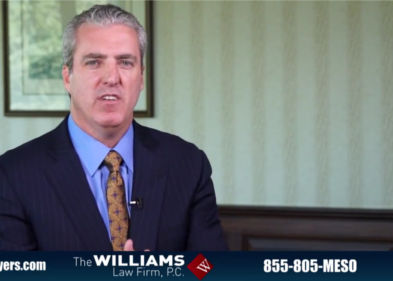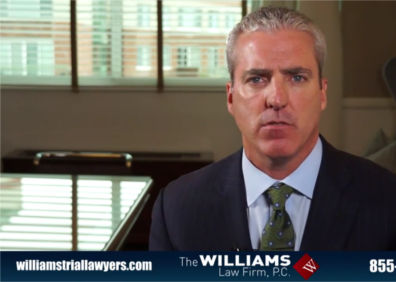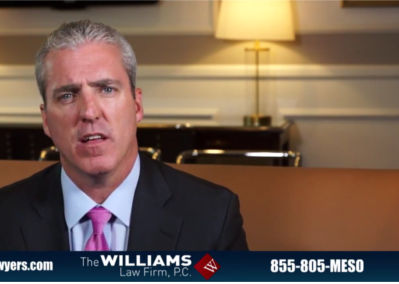Boil Maker Diagnosed with Mesothelioma | New York City Personal Injury
Joseph Williams
Boil Maker Vulnerable to Asbestos Exposure
Hi, I’m Joe Williams. I’m a mesothelioma trial attorney in New York City. I want to talk to you about a particular client I had and explain to you how he proved his exposures to asbestos. Now, this client, a former client of mine his name was Don and he was diagnosed with mesothelioma. He was a union boil maker who worked in the local power houses here in New York City for many decades. Through the course of his work he was exposed to all kinds of asbestos. Asbestos cement, asbestos block, asbestos pipe covering, asbestos refactoring. Now, the thing about Don that was very interesting is that Don was a brilliant guy. Don barely graduated high school, didn’t go to college, wasn’t a doctor or lawyer or any of those things. He was a union boiler maker. But boy, did he know what he was talking about. When it came time for him in the fight of his life and his deposition to talk about his exposures to asbestos he did a tremendous job of talking about all the ways that was was exposed to asbestos. He has an incredible memory and he was able to document through his great memory and his strong mind all the ways that he was exposed to asbestos. I have to say it was one of the great pleasures I’ve ever had working with such a knowledgeable and informed client. Don had a very successful and strong case and you may have a similar case. But every case is different. It’s depends on large part on the work up and effort that’s put into the case. To work on the case with the client to establish these exposures to asbestos so that we can prove them and resolve the case in a favorable way. Now, you have I’m sure many questions about how you prove that you were exposed to asbestos in the different ways you were exposed. We can answer those questions for you. I’m Joe Williams and at our firm we handle cases for mesothelioma victims everyday. Pick up the phone and call us at the number below and we’ll answer your questions. Thank you for listening.
Boil Maker Vulnerable to Asbestos Exposure
Hi, I’m Joe Williams. I’m a mesothelioma trial attorney in New York City. I want to talk to you about a particular client I had and explain to you how he proved his exposures to asbestos. Now, this client, a former client of mine his name was Don and he was diagnosed with mesothelioma. He was a union boil maker who worked in the local power houses here in New York City for many decades. Through the course of his work he was exposed to all kinds of asbestos. Asbestos cement, asbestos block, asbestos pipe covering, asbestos refactoring. Now, the thing about Don that was very interesting is that Don was a brilliant guy. Don barely graduated high school, didn’t go to college, wasn’t a doctor or lawyer or any of those things. He was a union boiler maker. But boy, did he know what he was talking about. When it came time for him in the fight of his life and his deposition to talk about his exposures to asbestos he did a tremendous job of talking about all the ways that was was exposed to asbestos. He has an incredible memory and he was able to document through his great memory and his strong mind all the ways that he was exposed to asbestos. I have to say it was one of the great pleasures I’ve ever had working with such a knowledgeable and informed client. Don had a very successful and strong case and you may have a similar case. But every case is different. It’s depends on large part on the work up and effort that’s put into the case. To work on the case with the client to establish these exposures to asbestos so that we can prove them and resolve the case in a favorable way. Now, you have I’m sure many questions about how you prove that you were exposed to asbestos in the different ways you were exposed. We can answer those questions for you. I’m Joe Williams and at our firm we handle cases for mesothelioma victims everyday. Pick up the phone and call us at the number below and we’ll answer your questions. Thank you for listening.










